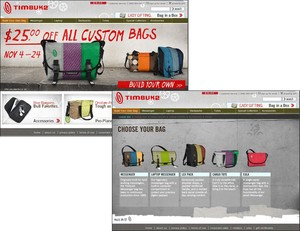Keys to E-Merchandising Success in Troubled Economic Times
Help Customers Make Wise Buying Decisions and You Will Foster Loyalty
In these hard economic times, you need to make it as easy for your customers to find, understand, and buy the products that fill their needs. This means that your e-merchandising efforts need to be top notch. This report presents 10 fundamental e-merchandising practices that will foster customer loyalty.
NETTING IT OUT
In this report, we have identified 10 e-merchandising practices that will foster customer loyalty. Each practice is illustrated by a leading Web site that is implementing an e-merchandising program. The 10 fundamental e-merchandising practices are:
1. Design compelling home and landing pages.
2. Present enticing product images and benefit-oriented descriptions.
3. Infuse your product presentations with brand personality.
4. Display up-to-date product pricing and availability.
5. Publish how-to advice and project checklists.
6. Offer comparison-shopping.
7. Provide customer ratings, reviews, and community commentary
8. Educate customers about trends.
9. Present clever ways to showcase your products.
10. Cross-sell and up-sell whenever appropriate.
There are two overarching themes across these 10 e-merchandising programs: build your brand and help customers spend their time and money wisely.
This report is an updated PSGroup Classic — originally published on March 2, 2000. New insights and examples have been added for the 2008 reader.
INTRODUCTION
In these hard economic times, you need to make it as easy for your customers to find, understand, and buy the products that fill their needs. This means that your e-merchandising efforts need to be top notch, or your customers may go elsewhere to spend their limited budgets.
Motivation matters. If your e-merchandising goals are primarily to cross-sell and up-sell, you are in trouble. Time- and money-pressed customers are not seeking additional product offers to juggle. Customers use the Web as a resource for researching and buying products and services. Listed below are 10 fundamental e-merchandising practices. They will build your brand and help customers make wise decisions.
1. DESIGN COMPELLING HOME AND LANDING PAGES
Similar to the catalog cover and the store win-dow, your Web site’s home page is one hot mer-chandising spot. But don’t forget that, with Web search technology, your customers don’t always start at the home page, but navigate directly to the landing page of the topic or product that interests them. You should consider almost every page on your site to be as important a merchandising opportunity as the home page. Therefore, make the most of all your landing pages and the e-merchandising opportunities they present. (See Illustration 1.)
Create excitement by displaying featured products that:
• Have broad appeal to multiple segments
• Have started to show accelerating sales
• Meet an imminent, often seasonal, need
• Are likely to intrigue the customer, perhaps because they are new or unusual
Illustration 1. Timbuk2’s home page has clear branding, product categories, featured products, and a prominent search box. It also has the navigation link to “build your own.” However, rather than following that link, we Google searched for personalized backpacks, and then navigated directly from Google to the Build Your Own landing page, which also has clear branding, product categories, and the prominent search box. So, even though we didn’t go to the Timbuk2 home page, we still have all the capabilities and information we need.
The featured product images need to be clickable and linked to product details. The most striking element in the landing page should be the featured product set; however, don’t overlook the other essentials...
Sign in to download the full article
0 comments
Be the first one to comment.





